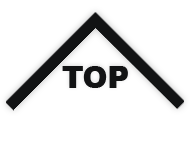Following is an article from Kuensel Dated 16th April 2013. It talks about the ranking of schools based on their academic performances. Such rating has always led to people being judgmental about school regardless of how much effort schools have put in in making differences in the lives of children. The whole purpose of education in school is reduced to mere academic results by such ranking, however it must be understood that it's rather the lack of adequate resources and knowledge that led to such narrow measurement.
In
accordance with the school performance rankings developed by the education
ministry
Fifteen schools in the country have maintained their
rankings in the list of top 40 performing schools in 2012, according to the
school performance rankings the education ministry released yesterday.
The 15 schools, including nine high schools, were also in
the list of the top 40 performing schools in the previous year.
However, unlike in the list of 2011, no community primary
schools (CPS) in the country made it to the 2012’s list. But lower
secondary schools, which had not made it to the previous year’s list, have made
it to the list this time. (see box)
The schools are ranked through the performance management
system (PMS), which the ministry started, to assess the quality of education in
schools. PMS is a tool to measure and continuously improve performance of
schools in respect to key areas of attainments, education officials said.
The education monitoring and support services division
(EMSSD) assesses schools in three areas: school performance scorecards, school
self-assessment (SSA), and annual school improvement plan (A-SIP).
School performance scorecards further include three
scorecards of (i) academic learning scorecards (ii) quality enabling practices
(EPS) and (iii) GNH scorecard.
Education officials explained that the academic learning
scorecards measure a school’s performance against student academic outcomes,
such as percentage of student performing above 45, 60 and 70 percent, and emphasis
authentic learning over rote learning
The quality enabling practices scorecard measures
effectiveness of critical processes and practices of school management, quality
and impact of teaching and training, infrastructure, and rigour and
effectiveness of school planning processes. District education officers
mark this scorecard at the start and middle of every academic year.
While the GNH scorecard measures achievement on GNH values
and practices in schools, as measured through the GNH indicators developed by
EMSSD.
The top 40 schools will be awarded certificates, the focus,
said education officials, is more on identifying schools that need improvement.
“Education monitoring officers will visit schools to find out the causes of low
performance and identify appropriate solutions and interventions,” education
officials said.
To ensure the delivery of quality education, the division
would continue to support schools in preparing school improvement plan and in
implementing it; assist during PMS exercises until the rating becomes
consistent with school performance across the country; focus more on low
performing schools; and decentralize ranking to local education authorities.
Annual ranking of schools are declared at four levels of
schools from PP to III (primary); IV to VI (primary); VII to X (middle
secondary) and XI to XII (higher secondary.)
Education officials said the annual school rankings are determined
by the academic learning scorecard for classes III, VI, and public examination
performance in classes X and XII. Data from schools’ EPS and GNH
scorecards are also included to generate a more comprehensive performance
school ranking.
In an earlier interview on assessing and ranking schools,
education minister Thakur S Powdyel had said that, by assessing school
performance, the ministry is taking into account the integrity of school life,
and requiring the schools to operate at a very high level, both academically
and intellectually.
“So, by the end of the year, there’s a certain requirement
to be met by all students, and we want them to be able to measure up by what
the curriculum says at the very minimum,” lyonpo had said. “As they’re full
time students, taught by full time teachers in full time schools, learning has
to be full time.”
By Sonam
Pelden




0 comments:
Post a Comment